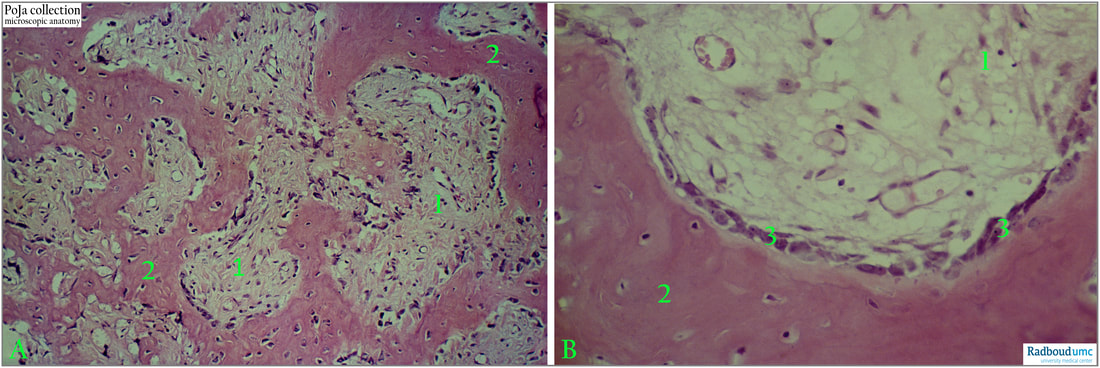16.1.3 POJA-L7045+7047-2 Callus formation
16.1.3 POJA-L7045+7047-2 Callus formation
Title: Callus formation
Description:
(A, B): Human adult. Haematoxylin-eosin stain. Woven bone formation in callus after fracture and repair of bone.
(1): Proliferated connective tissue. (2): Formation of new woven bone.
(3): Activated osteoblasts.
Healing process after bone fracture:
Key words/Mesh: locomotor system, bone, callus, woven bone, osteoblast, POJA collection, histology, pathology
Title: Callus formation
Description:
(A, B): Human adult. Haematoxylin-eosin stain. Woven bone formation in callus after fracture and repair of bone.
(1): Proliferated connective tissue. (2): Formation of new woven bone.
(3): Activated osteoblasts.
Healing process after bone fracture:
- Haematoma forms between two ends of bone, creates fibrin mesh which seals fracture site;
- Young capillaries enter haematoma;
- Dead bone reabsorption begins at 3 days;
- Periosteal inner layer promotes intramembranous bone growth on each side of fracture, which meets at fracture site to form a primary callus, which anchors ends but doesn’t support weight bearing;
- This is resorbed and replaced by secondary callus, composed of mature lamellar bone;
- New bone is laid down along lines of stress.
Key words/Mesh: locomotor system, bone, callus, woven bone, osteoblast, POJA collection, histology, pathology

